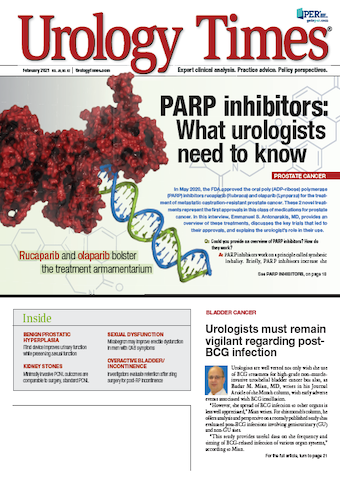Publication
Article
Urology Times Journal
Real-time patient access to charts opens up real potential for misinterpretations
Author(s):
"I have no problem with patients seeing everything in their chart. It is their medical record, after all. But I do think there should be some limitations on this access," writes Henry Rosevear, MD.
Henry Rosevear, MD

Rosevear, a member of the Urology Times® Clinical Practice Board, is a urologist in community practice in Colorado Springs, Colorado.
I’m not trying to hide anything; I’m really not. I have no problem with patients seeing everything in their chart. It is their medical record, after all. But I do think there should be some limitations on this access.
A surgeon I know was recently working near a major blood vessel and damaged it; things happen in the operating room despite our best efforts. The surgeon did the right thing, controlled the bleeding and in the process asked a vascular surgeon for help. After the vascular surgeon completed her work, the first surgeon finished the case, brought the patient to recovery, entered some orders in the computer, and then went to talk to the family. And the family was angry. Really angry. What happened? It turns out, the family was monitoring the chart during the case and saw the vascular surgeon’s draft operative note before either surgeon had a chance to talk to the family.
A vegan patient of mine on testosterone replacement had a slowly rising hemoglobin. Eventually, he started giving blood to the American Red Cross quarterly. We continued to monitor his labs and I started monitoring his ferritin level. Every medical student knows that chronic blood loss can lead to anemia secondary to iron deficiency. The patient called, angry that I was ordering unnecessary labs as we had never monitored ferritin level in the past.
In December 2016, the government signed the 21st Century Cures Act into law. As part of that law, the federal government mandated that health care providers offer patients free access to the medical records to include consult notes, discharge summaries, H&P’s, labs, pathology reports, imaging reports, clinic/progress notes, and all operating/procedure notes. There are a few exceptions, including psychotherapy notes and notes that might reasonably be assumed to be used in a civil or criminal case. And importantly, most systems are interpreting this law to mean near–real-time access to these records, including all notes in their draft form.
I tend to speak quickly and quietly. You might say I mumble. (You’d be right.) The number of errors I find in my draft operative notes is high and has only gone up since I’ve starting wearing an N95 when I dictate. I approached some of the hospital administrators about this potential issue and their response was that I should use pre-made templates for my procedures (dot phrases in the lingo of the hospital EMR). Further, they suggested that I stop dictating completely (a very expensive habit, I was told) and instead simply type. I believe that every case is different and hence my notes should reflect those differences and much to the administrators’ chagrin, I informed them that I am not a typist. Sorry.
Or we could not provide access to patients to notes in their draft form; they are, after all, in their draft form? Chuckle. Laugh. Get back to work, little cog.
The philosophy of “Open Notes” has been around for decades. Leaders in the field believe that providing real-time access to notes improves patient safety and patient engagement.1 I don’t disagree with those statements, but I do believe that the information patients are provided should be vetted and finalized before being published.
Reference
1. Blease C, Walker J, DesRoches Cm, Delbanco T. New U.S. law mandates access to clinical notes: implications for patients and clinicians. Ann Intern Med. 2021;174(1):101-102. doi:10.7326/M20-5370






















